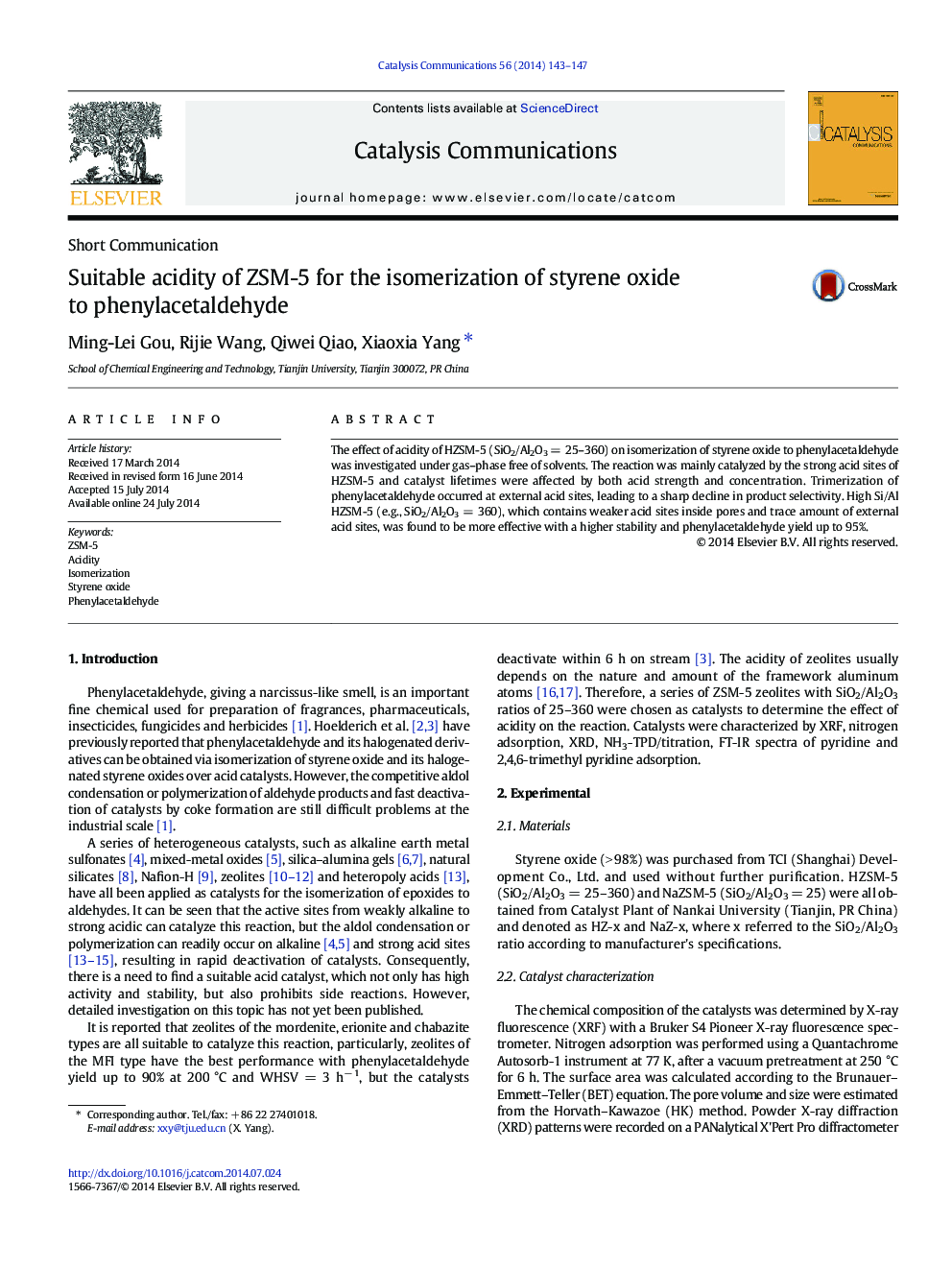| Article ID | Journal | Published Year | Pages | File Type |
|---|---|---|---|---|
| 49446 | Catalysis Communications | 2014 | 5 Pages |
•The catalyst lifetimes are affected by both acid strength and concentration.•Trimerization of phenylacetaldehyde occurs at the external acid sites.•Aldol condensation of phenylacetaldehyde is not sensitive to the acidity.•High Si/Al HZSM-5 without external acid sites is more suitable for this reaction.
The effect of acidity of HZSM-5 (SiO2/Al2O3 = 25–360) on isomerization of styrene oxide to phenylacetaldehyde was investigated under gas–phase free of solvents. The reaction was mainly catalyzed by the strong acid sites of HZSM-5 and catalyst lifetimes were affected by both acid strength and concentration. Trimerization of phenylacetaldehyde occurred at external acid sites, leading to a sharp decline in product selectivity. High Si/Al HZSM-5 (e.g., SiO2/Al2O3 = 360), which contains weaker acid sites inside pores and trace amount of external acid sites, was found to be more effective with a higher stability and phenylacetaldehyde yield up to 95%.
Graphical abstractFigure optionsDownload full-size imageDownload as PowerPoint slide
